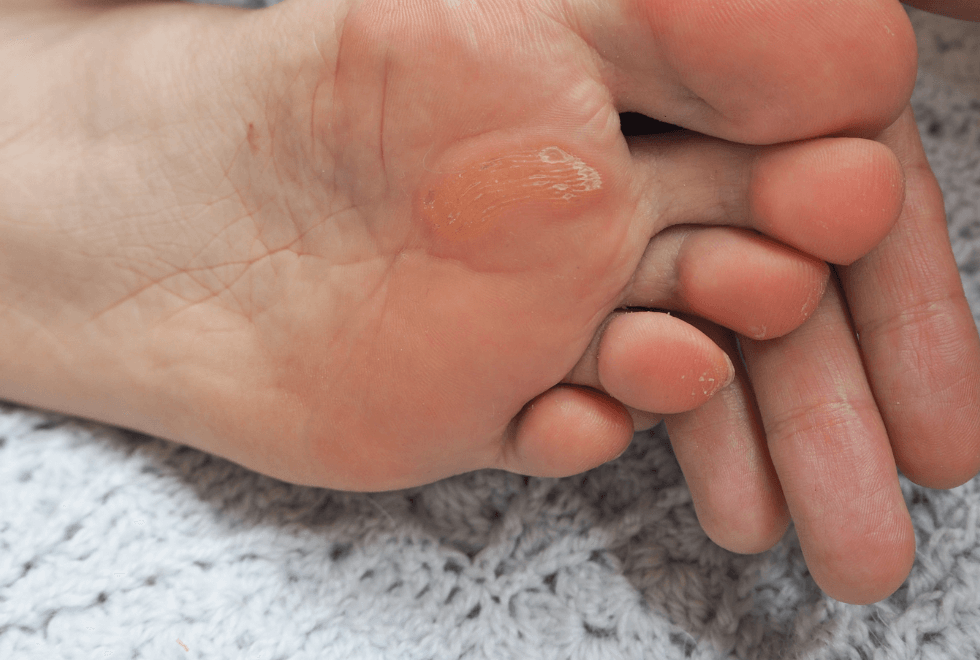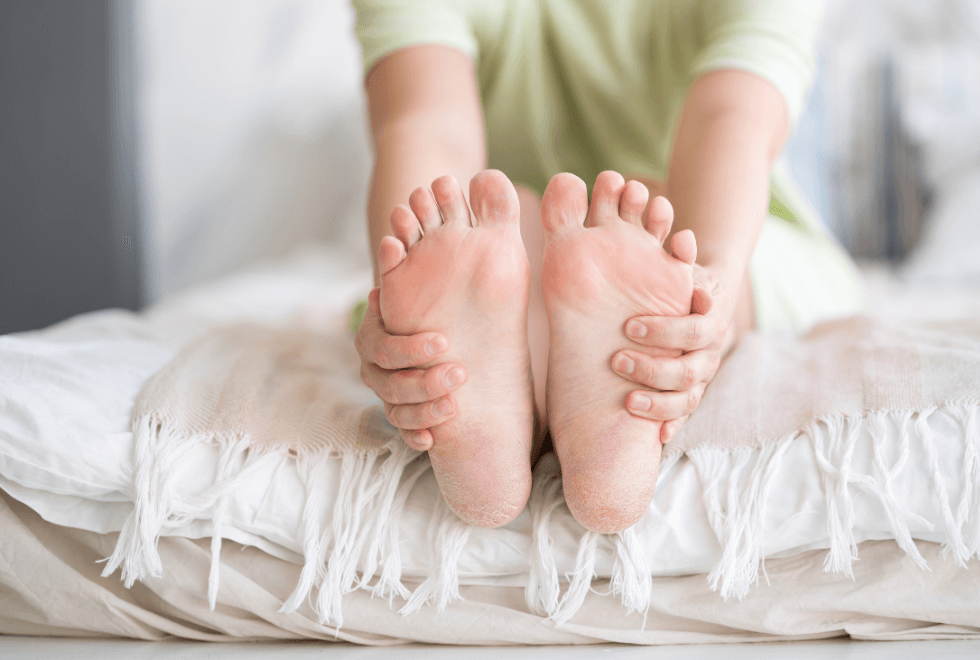Have You Noticed Hard, Thickened Spots on Your Feet or Toes?
Ever felt a hardened, thick bump on your sole or toes that sometimes hurts when pressed? This could be a sign of corns or calluses, which develop due to repeated pressure and friction. If left untreated, they can cause pain, discomfort while walking, and even increase the risk of infection.
Understanding the causes and taking early preventive measures can help keep your feet healthy and pain-free!

Causes of Corns and Calluses
Excessive Pressure and Friction
Corns and calluses form when the skin is exposed to repeated pressure or friction, leading the body to create a thickened layer of skin as protection. Common areas where they appear include the toe joints, soles, and sides of the toes.Improper Footwear
- Tight shoes or pointed toe shoes → These cause friction on the toes.
- Loose shoes → Allow the foot to move around, increasing pressure and friction.
- High heels → Put extra pressure on the toes, leading to corns at the toe tips and toe joints.
- Abnormal Foot Structure: Increased Risk of Corns
- Flat feet → Cause uneven weight distribution, leading to excessive pressure on specific points of the foot.
- Bunions → Increase friction on the toes.
- Hammer toe → Abnormal toe bending causes pressure on the toe joints against shoes.
- Diabetes
People with diabetes are at risk for diabetic neuropathy, which reduces feeling in the feet. They may not notice pressure or friction leading to corns. Poor circulation from diabetes also slows healing, making any sores or corns more likely to become chronic and prone to infection.
Flat Feet and Risk of Corns
Flat feet might seem unrelated to corns, but they are actually closely connected. Here’s how:
- Uneven pressure on the soles causes some areas of the foot to bear more weight, leading to corns.
- The abnormal foot structure causes more friction with shoes during walking.
- Increases the likelihood of developing bunions, which can cause corns.
How to Prevent and Treat Corns
Avoid Walking Barefoot on Hard Surfaces
Walking barefoot exposes the feet to direct pressure. Always wear shoes with good arch support.Foot Care and Reducing Callus Thickness
Soak feet in warm water, then use a pumice stone to gently rub off the thickened skin.
Use urea-based foot cream to soften the skin and reduce callus thickness.Special Foot Care for Diabetic Patients
- Check feet daily for corns, sores, or redness.
- Avoid cutting corns yourself. Consult a doctor or specialist.
Adjust Walking and Standing Habits
If standing or walking for long periods, take regular breaks and avoid excessive pressure on specific foot points.Choose Proper Footwear
- Wear shoes that fit well and don’t pinch or feel too loose.
- Avoid high heels for long periods.
- Choose shoes with arch support and weight distribution.
- Use Custom Insoles
Custom-designed insoles help distribute weight, adjust foot structure, reduce the risk of corns, and make walking more comfortable.

Reduce Pressure, Adjust Foot Structure, and Prevent Corns with Custom Insoles!
If you have flat feet and often experience corns, custom insoles designed for flat feet can help distribute weight, adjust foot structure, reduce pressure, minimize friction, and make walking more comfortable. Give your feet a break from pressure and friction by taking care of your foot health starting today!
For those interested in using custom insoles for flat feet, you can inquire for more information or consult on choosing the right insole at Physical Balance Solution (PBS). PBS treats flat feet, foot pain, and plantar fasciitis without surgery, available at seven convenient locations near you: Nawamin, Pinklao, Bangkae, Watcharaphon, Bangna, Khon Kaen, and a new branch in Songkhla (Hat Yai), or through online channels.